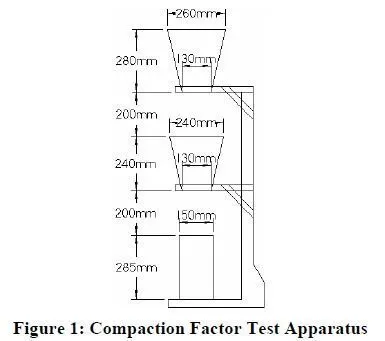The LCL flow test (Bartos 1992; Ferraris 1999; Bartos, Sonebi and Tamimi 2002) is very similar to the Angles flow box test. The test is suitable for concretes with low and moderate workability and is not appropriate for concretes with very low or very high workability.
The device consists of a 150 mm by 600 mm rectangular box with a height of 150 mm. An
external vibrator is attached to one end. A triangular wedge holds uncompacted concrete in the opposite end of the box. Rubber supports beneath the box isolate the box and absorb vibrations.
To start the test, the wedge is removed and the vibrator is started. The time for concrete to spread to the other end of the box and fill to a line marked on the side of the box is measured.
The results of the LCL flow test are related to plastic viscosity. Further, yield stress could be determined by slowly increasing the amplitude of vibration until the concrete begins to flow.
Although the test provides a direct and usable result, the device must be calibrated using a standard aggregate and a standard mix design in order to interpret the results further. The difficulty in determining the endpoint of the test reduces the precision of the test results. Two sizes of the device exist: one for normal concrete and another for mortars and concretes with maximum aggregate size less than 12.5 mm. The larger device requires 35 liters of concrete.
Advantages:
The LCL flow test is a dynamic test, capable of measuring values related to both yield stress and plastic viscosity.
The test partially represents actual field conditions.
A direct result is quickly obtained.
Disadvantages:
The test is more expensive and complicated than the slump test and requires electricity, thus reducing the likelihood it would be used in the field.
Although the test does measure values related to yield stress and plastic viscosity, the values are not determined in fundamental units.
The precise end point of the test can be difficult to determine.
